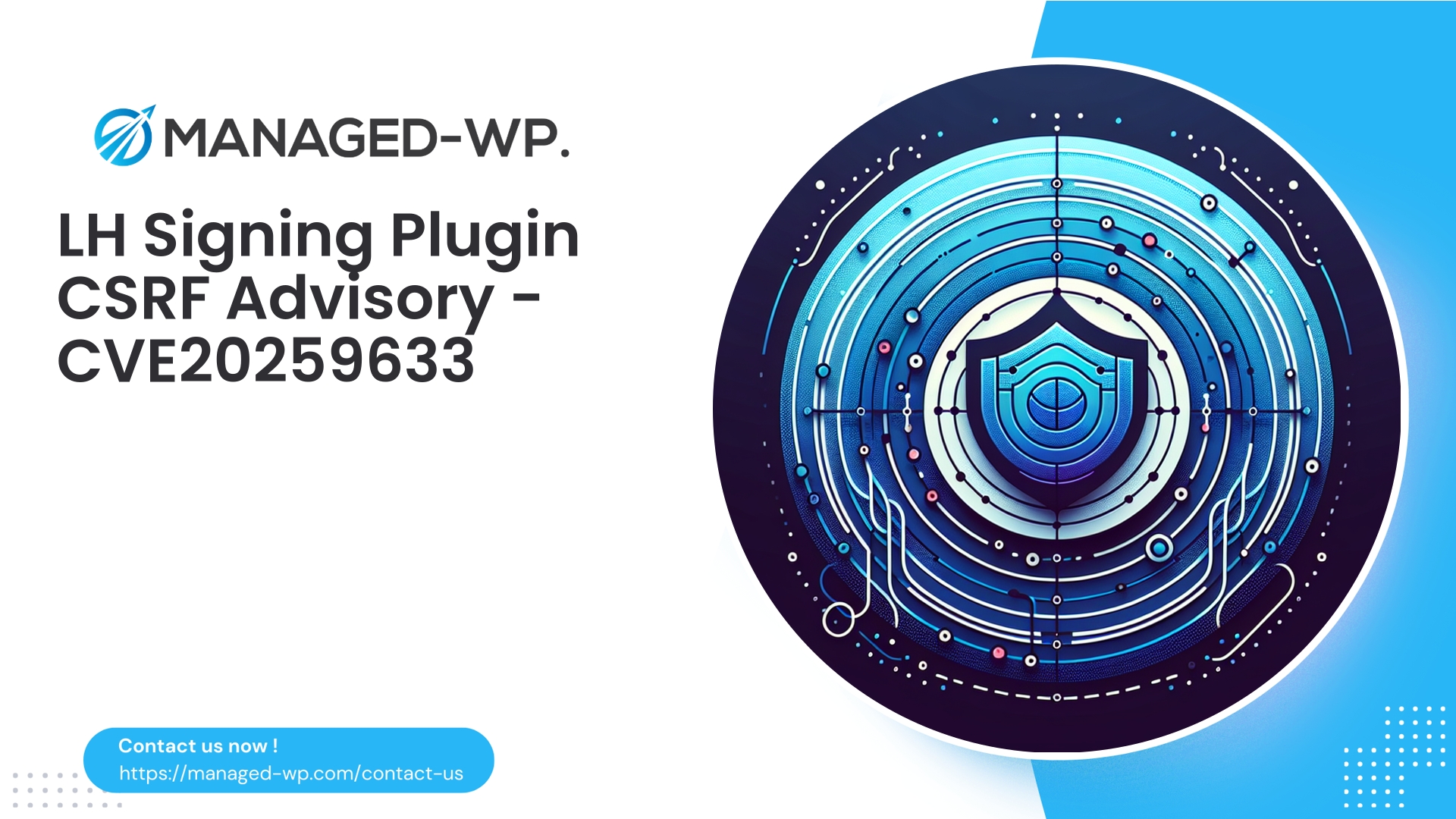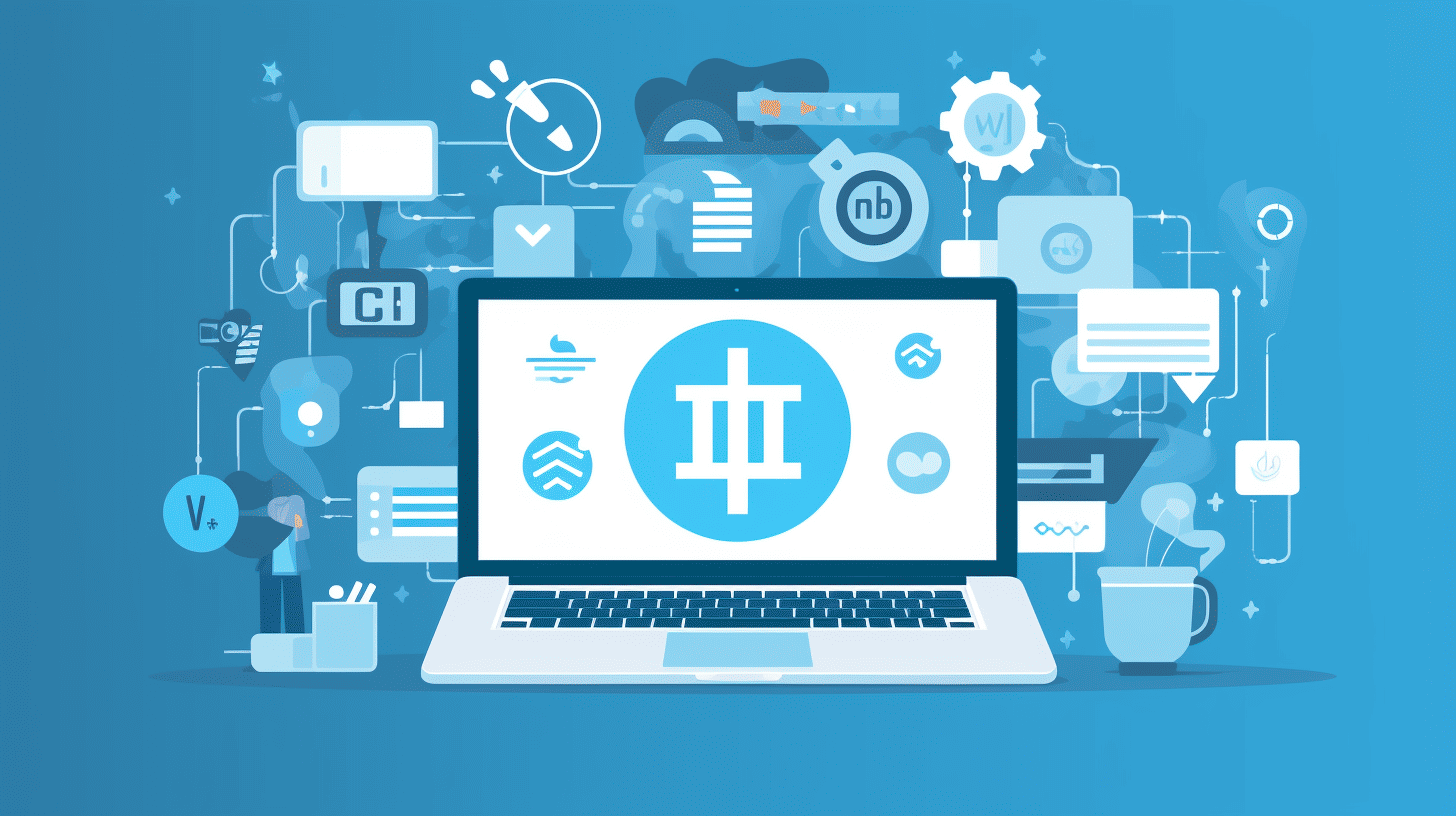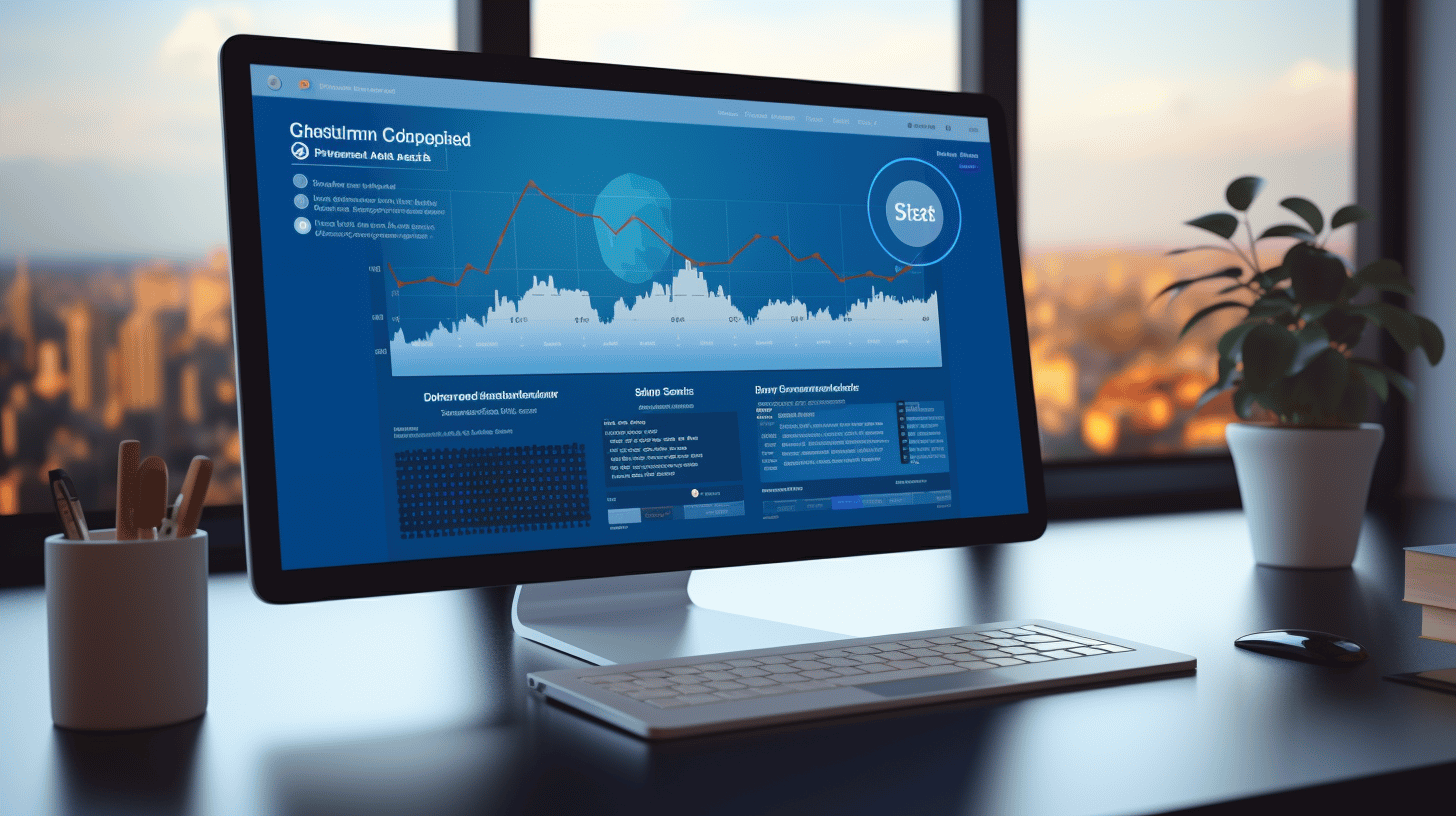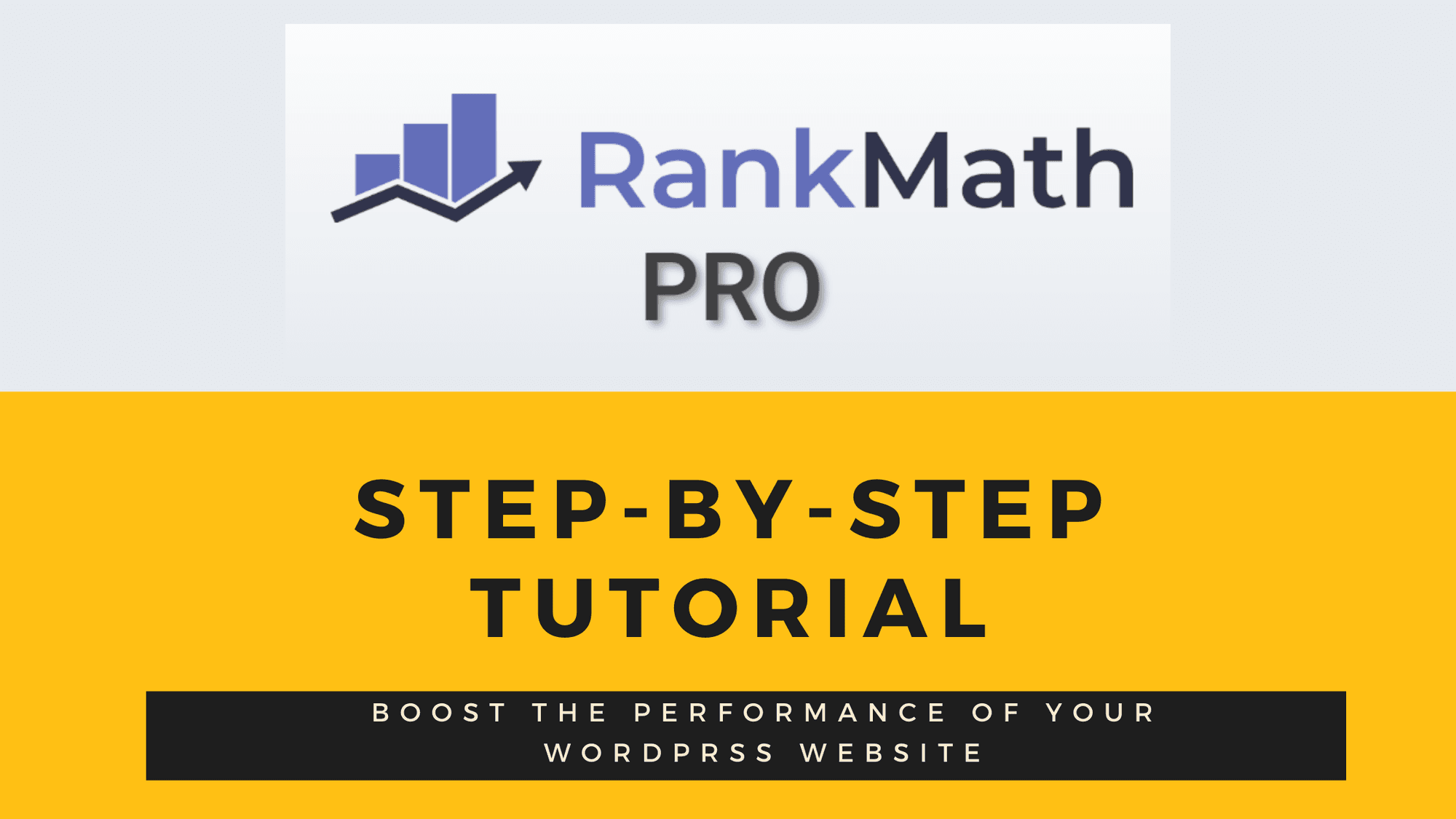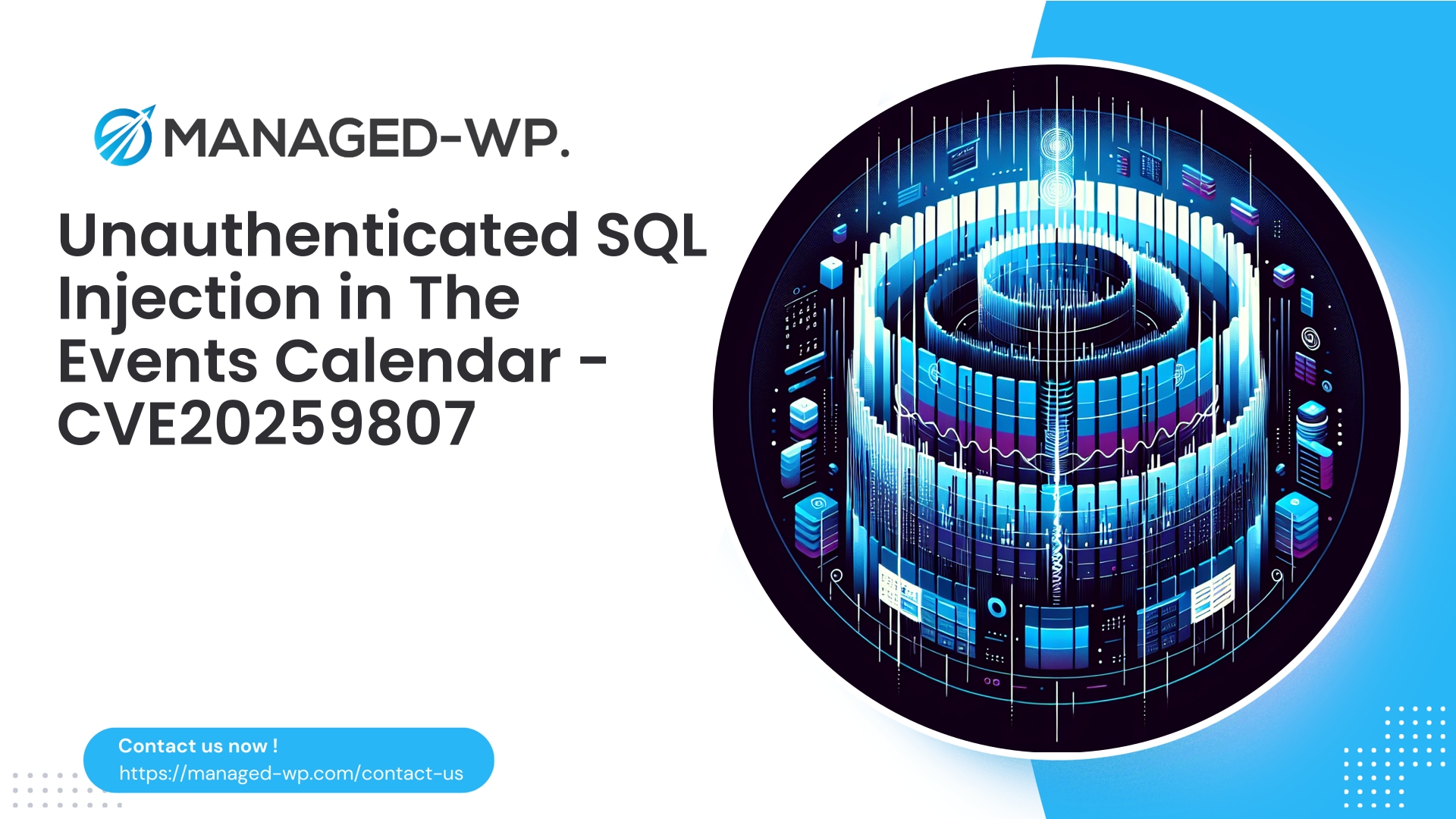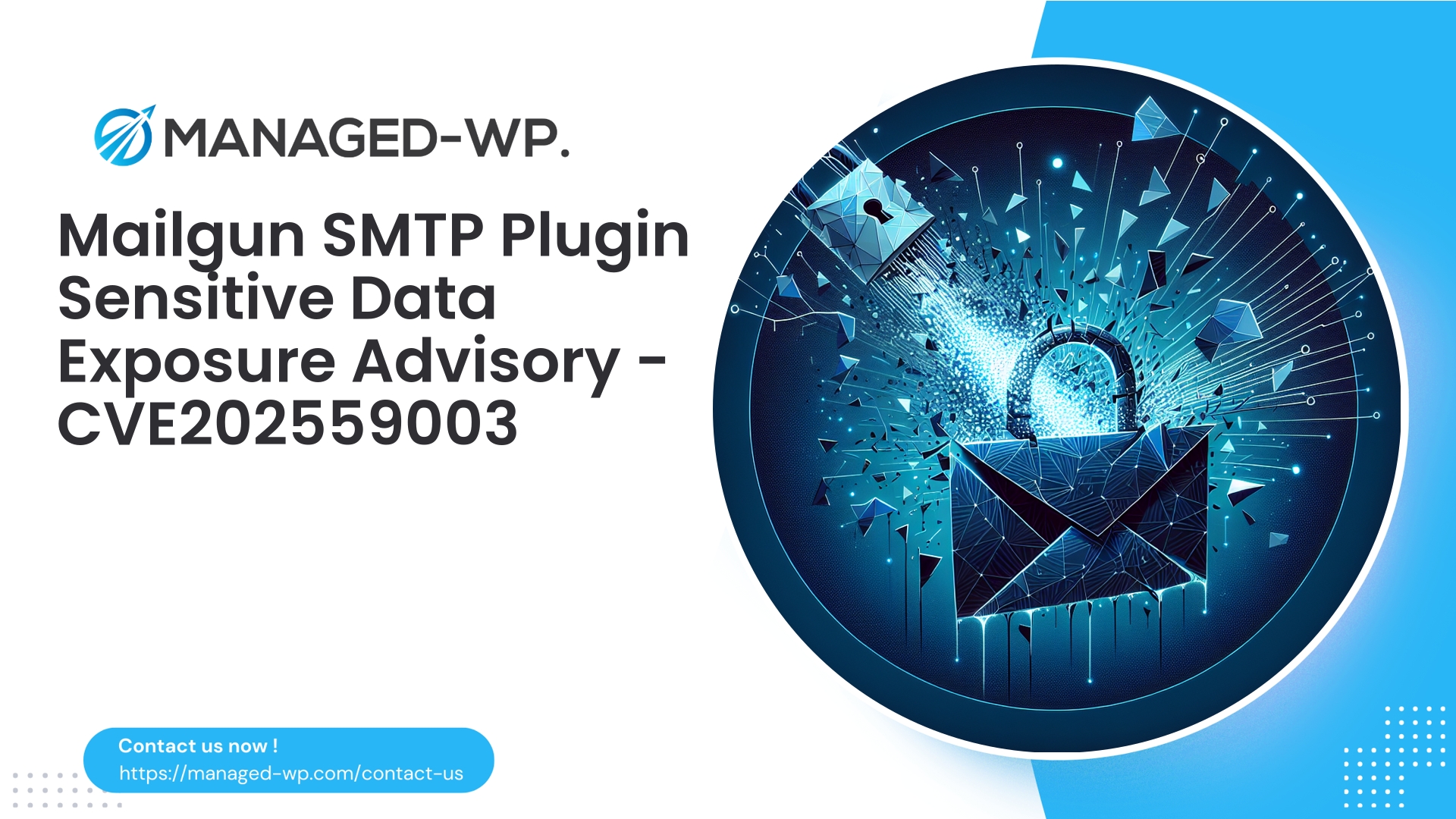| Plugin Name | LH Signing |
|---|---|
| Type of Vulnerability | CSRF |
| CVE Number | CVE-2025-9633 |
| Urgency | Low |
| CVE Publish Date | 2025-09-11 |
| Source URL | CVE-2025-9633 |
Summary
A Cross-Site Request Forgery (CSRF) vulnerability has been identified in the LH Signing WordPress plugin, affecting versions up to 2.83. Catalogued as CVE-2025-9633, this weakness carries a low severity rating with a CVSS score of 4.3. It allows an attacker to trick authenticated users—including administrators—into executing unintended actions on the website while logged in. At the time of disclosure, no official patch has been released by the plugin developer.
As cybersecurity professionals specializing in WordPress environments, Managed-WP thoroughly investigates the technical specifics of this vulnerability, assesses the practical risks it poses, outlines how to detect potential exploitation attempts, and provides immediate and long-term mitigation strategies. Where applicable, we also offer virtual patching solutions utilizing WordPress firewalls to reduce risk while official fixes are pending.
Important: To maintain responsible disclosure, exploit code is not shared here. Our focus is on raising awareness, risk understanding, and delivering actionable advice.
Why CSRF remains a critical threat in WordPress
Cross-Site Request Forgery attacks leverage the authenticated status of users on WordPress sites to execute unauthorized actions without their consent. Key points include:
- CSRF exploits commonly target administrative features, modifying plugin configurations, managing content, altering user accounts, or triggering automated processes.
- WordPress core includes CSRF defenses such as nonces and capability checks, but these are only effective if plugin developers implement them correctly and consistently.
- When plugins expose admin forms, AJAX endpoints, or REST API routes without validating nonces or properly verifying user capabilities, they create vectors for CSRF attacks.
While the “low” severity rating indicates this vulnerability poses limited immediate danger or is difficult to exploit, it does not eliminate risk—especially for high-traffic, mission-critical websites where attackers may chain vulnerabilities or conduct large-scale attacks.
Details of the LH Signing CSRF Vulnerability (CVE-2025-9633)
- Impacted software: LH Signing WordPress plugin
- Affected versions: 2.83 and earlier
- Vulnerability category: Cross-Site Request Forgery (CSRF)
- CVE Identifier: CVE-2025-9633
- Reported attacker privileges: Unauthenticated (although exploitation depends on victim authentication)
- Patch status: No official fix currently available
Clarification on “Unauthenticated” label: The designation means attackers do not need credentials to deliver the malicious payload, but execution depends on a logged-in user (usually an admin) interacting with crafted content.
Potential Threats Posed by This Vulnerability
Given the sensitive nature of signing and cryptography operations performed by the plugin, the following impacts are plausible:
- Coercion of privileged users to perform unauthorized configuration changes or create signed artifacts manipulated by attackers.
- Tampering with plugin-managed data or content stored or processed by LH Signing.
- Compound exploitation by combining CSRF with other weaknesses such as inadequate input validation or broken access controls.
- Large-scale automated attacks targeting multiple users, exploiting any admin that visits attacker-controlled pages.
Why this is rated low severity:
- Requires an authenticated user with privileged access to trigger the vulnerability.
- Operations enabled by the vulnerability have limited destructive potential based on current understanding.
- No publicly disclosed exploits available as of the advisory date.
Nonetheless, organizations using LH Signing should not disregard this risk, especially if administrators access untrusted sites regularly.
Common Exploitation Mechanism for CSRF in WordPress Plugins
- An attacker designs a malicious HTML form or hidden HTTP request targeting vulnerable plugin endpoints.
- The crafted request includes parameters required to trigger the plugin’s actions.
- An authenticated admin or privileged user unknowingly visits the attacker-controlled webpage or clicks a malicious link.
- The victim’s browser automatically sends the authenticated request including session cookies.
- The vulnerable endpoint performs the requested action lacking proper CSRF verification (no nonce or capability checks).
This highlights why nonce validation and strict capability checks are essential to prevent unauthorized commands executed through legitimate user sessions.
Detecting Signs of CSRF Attempt or Exploitation
CSRF attacks blend within legitimate user activity, but careful monitoring can reveal suspicious behavior:
- Unexpected POST requests to plugin-related admin endpoints originating from external or suspicious referrers.
- Administrative setting changes or unexpected content modifications following suspicious network events.
- Abnormal admin activities outside regular hours or from unfamiliar IP addresses.
- Referrer or origin headers in access logs that originate from external domains.
- Repeated automated attempts to invoke the same plugin action endpoints.
- Presence of new plugin data or content alterations without clear administrative cause.
Hunting recommendations:
- Review web server logs for POST requests to susceptible plugin paths lacking valid WordPress nonce tokens.
- Use audit plugins or logging tools to correlate suspicious configuration changes with IP addresses and user sessions.
- Utilize integrity checking tools to detect unauthorized changes to plugin files or site assets.
Short-Term Mitigations for Administrators
If your WordPress site runs LH Signing version 2.83 or earlier, implement the following immediately:
- Deactivate the plugin temporarily: The most straightforward mitigation is disabling LH Signing until an official patch is available, provided its features are not urgently required.
- Restrict admin access: Implement IP whitelisting or access controls at the server or firewall level to limit backend entry to trusted sources only.
Alternatively, enforce additional authentication requirements for administrators or temporarily reduce admin roles. - Browser security hygiene: Instruct administrators to avoid clicking untrusted links while logged in, and log out of admin panels after use.
- Enable multi-factor authentication (MFA): Strengthen credentials by requiring second-factor authentication, reducing attack success even if credentials are compromised.
- Secure session cookies: Ensure cookies use the SameSite=Lax or Strict attribute and HTTPS usage with secure flags to limit cookie exposure.
- Deploy Web Application Firewall (WAF) virtual patches: Block or harden plugin action endpoints with rules such as referer validation, nonce presence, and origin checks.
- Enhance logging and monitoring: Increase audit log detail and review site activity frequently to detect anomalies.
If plugin deactivation is unfeasible, combine multiple mitigations to reduce exposure.
Virtual Patching: WAF Strategies to Apply Immediately
In the absence of an official patch, Managed-WP recommends applying these conceptual WAF rules to intercept potential exploitation:
- Block suspicious POST requests: Deny POST requests to LH Signing plugin endpoints from external origins unless accompanied by valid nonces or expected headers.
Example rule logic: If the request is POST and targets paths within/wp-content/plugins/lh-signing/or related admin AJAX actions, validate the HTTP Referer matches the host and X-Requested-With header presence; block otherwise. - Enforce Referer or Origin header checks: Only accept POST requests to admin endpoints that originate from the same host.
- Require Nonce-like tokens: Reject requests missing expected WordPress nonce parameters (e.g.,
_wpnonce). - Throttle suspicious activity: Rate-limit repeated requests targeting the same actions or those exhibiting automated behavior.
- Validate Content-Type headers: Block uncommon content types on form submission endpoints to impede malformed requests.
- Require AJAX headers for JS-only actions: Verify
X-Requested-With: XMLHttpRequestexists where applicable. - Restrict wp-admin access by IP: Limit access to administrative pages to a known set of IP addresses.
- Monitor and alert on blocked attempts: Log and generate alerts on all deny-rule matches for security analyst review.
Warning: Test all WAF rules on staging servers before production deployment to prevent breaking legitimate site functionality.
Secure Development Guidance for Plugin Authors
Developers are strongly urged to implement WordPress native anti-CSRF protections:
- Adopt WordPress nonces: Use
wp_nonce_field()for forms andcheck_admin_referer()for verification. For AJAX, usewp_create_nonce()and verify withcheck_ajax_referer(). REST API routes must implementpermission_callbackchecks. - Verify user capabilities: Always confirm user privileges (e.g.,
current_user_can('manage_options')) before executing sensitive operations. - Avoid altering state via GET requests: Critical actions should exclusively use POST accompanied by nonce validation.
- Input sanitization and validation: Reduce risk of compounded vulnerabilities by sanitizing all external inputs.
- Limit exposed endpoints: Expose only necessary routes or actions, preferring REST APIs with robust permission callbacks over generic admin-post hooks.
- Understand cookie policies: Use SameSite cookie attributes where applicable to minimize cross-origin risks.
- Establish responsible disclosure: Maintain a vulnerability reporting process and publish patches promptly with clear mitigation instructions.
Neglecting these best practices jeopardizes both site security and user trust.
Incident Response Steps if Exploitation is Suspected
- Isolate: Deactivate the vulnerable plugin and block suspected malicious IP addresses immediately.
- Preserve logs: Collect all relevant server, plugin, and access logs corresponding to the suspected time frame.
- Audit site changes: Examine administrative actions, content alterations, plugin records, and scheduled tasks for irregularities.
- Rotate credentials: Enforce password resets for admins and rotate any compromised API keys or tokens.
- Restore cautiously: If damage has occurred, revert to a clean backup taken prior to the suspected compromise, verifying that vulnerabilities are addressed before reactivation.
- Strengthen protections: Post-incident, enable multi-factor authentication, tighten access controls, and implement WAF rules.
- Notify relevant parties: Inform site owners, stakeholders, or regulatory bodies as required based on the incident scope and data impacted.
Long-Term Recommendations for Hardening WordPress Sites
- Keep an up-to-date inventory of plugins, themes, and their versions installed on your site.
- Remove unused or deprecated plugins and themes promptly.
- Apply security updates and patches as soon as they become available.
- Minimize the number of administrative users and assign the least privilege necessary.
- Enable multi-factor authentication for all privileged accounts.
- Schedule regular backups and verify recovery procedures frequently.
- Employ a managed Web Application Firewall capable of virtual patching and detailed monitoring.
- Test plugin updates in staging environments before deploying to production.
- Regularly audit plugin code or request security attestations from vendors.
Indicators of Compromise (IoCs) to Monitor
- Plugin endpoint requests from external or missing Referer/Origin headers.
- Repetitive POST requests to the same plugin actions from third-party sources.
- Unexpected admin configuration modifications immediately following external requests.
- Newly created plugin data inconsistent with normal user behavior.
Any of these warrants further investigation and possible incident response.
How Managed-WP Assists (Virtual Patching & Protection)
Managed-WP delivers comprehensive WordPress security services, including:
- Rapid deployment of managed WAF rules that virtual-patch plugins for known vulnerabilities before official patches are available.
- Custom filters blocking unauthorized POST requests, enforcing nonce presence, and throttling malicious traffic.
- Continuous malware scanning and behavioral monitoring to detect suspicious plugin activity or admin anomalies.
- Expert guidance on incident response and remediation to minimize impact from emerging threats.
If you seek immediate risk reduction for plugin vulnerabilities like the LH Signing CSRF, Managed-WP’s virtual patching services provide the fastest and most reliable protection.
Get Started with Managed-WP Today – Essential Protection at Your Fingertips
Running a WordPress website shouldn’t mean guessing on security. Managed-WP offers a Basic free plan providing essential, always-on protections, easy setup, and zero performance impact, including:
- Managed firewall guarding your site at the HTTP level
- Unlimited bandwidth for firewall service traffic
- WAF rules blocking common and emerging WordPress threats
- Malware scanning detecting malicious code or file changes
- Virtual mitigation of OWASP Top 10 risks
This free tier helps reduce your exposure to vulnerabilities like the LH Signing CSRF while you await vendor updates. Learn more and sign up here: https://my.wp-firewall.com/buy/wp-firewall-free-plan/
Need more advanced capabilities? Managed-WP’s Standard and Pro plans include automatic malware removal, IP controls, monthly reporting, and automated virtual patching.
Critical Next Steps – What You Should Do This Week
- Identify if your site runs LH Signing and verify the plugin version. Prioritize mitigation if version is 2.83 or below.
- Deactivate LH Signing if a patch is unavailable until the vendor releases a secure update.
- If deactivation is not possible:
- Apply WAF rules to restrict plugin endpoint access (referer validation, nonce enforcement, source limitations).
- Restrict wp-admin access to trusted IPs and enable multi-factor authentication for admin users.
- Increase logging and monitor for Indicators of Compromise.
- Change administrator passwords and audit recent administrative changes for suspicious activity.
- Subscribe to security advisories or official plugin updates to stay informed and apply fixes promptly.
- Consider Managed-WP services to implement virtual patches and continuous monitoring for seamless protection.
Appendix – Quick Action Checklist
- Confirm plugin version: LH Signing ≤ 2.83?
- Temporarily deactivate LH Signing until patched
- Enable multi-factor authentication (MFA) for all admin accounts
- Restrict admin access to trusted IP addresses
- Configure WAF to:
- Deny external-origin POSTs to plugin endpoints
- Require X-Requested-With header for AJAX endpoints
- Block requests missing nonce-like parameters
- Audit webserver logs for unusual POST requests and referrer headers
- Backup site and preserve logs if exploitation suspected
- Rotate admin passwords if suspicious indicators found
- Monitor for plugin patches and apply immediately
If you require assistance implementing virtual patches or customized firewall rules to protect against this vulnerability before an official patch is issued, Managed-WP’s security engineers are ready to assess your environment and recommend tailored solutions. Visit our free plan page for guidance and enrollment: https://my.wp-firewall.com/buy/wp-firewall-free-plan/
Your security is paramount. Combining layered defenses such as WAFs, strict access controls, two-factor authentication, and timely updates dramatically lowers your attack surface.
— Managed-WP Security Team











